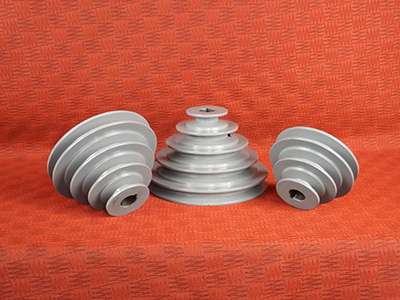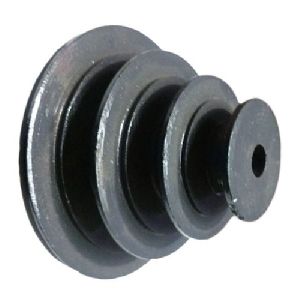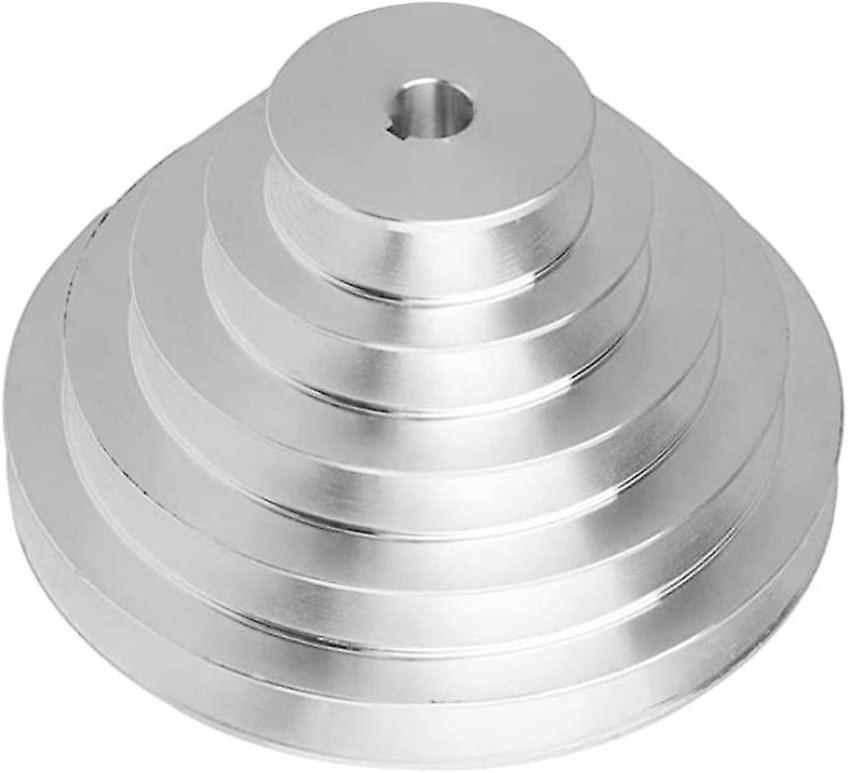Product Description
CNC Cutting Stamping Machining Part OEM Power Transmission Part Belt Tensioner Pulley V Belt Pulley
| We Are Professional Metal Processing Factory With Modern Automation Equipment, Specialized in Precision Machining part /Turning part /Welding part /Precision Fixture.Send Us RFQ Now, We will Feedback You Quotation Within 24 Hours. |
Product Description
| Equipment |
| 3-axis, 4-axis and full 5-axis processing equipment, CNC lathe, centering machine, turning and milling compound, wire cutting, EDM, grinding, etc |
| Processing |
| CNC machining, CNC Turning, CNC Milling, Welding, Laser Cutting, Bending, Spinning, Wire Cutting, Stamping, Electric Discharge Machining (EDM), Injection Molding |
| Materials |
| Aluminum:2000 series, 6000 series, 7075, 5052, etc. |
| Stainless steel: SUS303, SUS304, SS316, SS316L, 17-4PH, etc. |
| Steel:1214L/1215/1045/4140/SCM440/40CrMo, etc. |
| Brass:260, C360, H59, H60, H62, H63, H65, H68, H70, Bronze, Copper |
| Titanium:Grade F1-F5 |
| Plastic:Acetal/POM/PA/Nylon/PC/PMMA/PVC/PU/Acrylic/ABS/PTFE/PEEK etc. |
| Tolerance |
| +/-0.002~+/-0.005mm |
| Our Advantages |
| 1)24 hours online service & Quickly Quote/Delivery. 2)100% QC quality inspection before delivery, and can provide quality inspection form. 3)10+ years of experience in the CNC machining area and have a senior design team to offer perfect modification suggestions |
| Quality Assurance |
| 100% Inspect Before Shipment, ISO9001:2015, ISO13485:2016, SGS, RoHs, TUV |
| Serface Treatment |
| Aluminum parts:Clear Anodized, Color Anodized, Sandblast Anodized, Chemical Film, Brushing, Polishing Stainless Steel parts:Polishing, Passivating, Sandblasting, Laser engraving, Electrophoresis black, Oxide black Steel parts:Zinc Plating, Oxide black, Nickel Plating, Chrome Plating, Carburized, Heat treatment Brass parts:Nickel Plating, chrome plating, Electrophoresis black, Oxide black, Powder coated |
Click Here Get Free Quotation
Machining Workshop
| Nonstander Gears Display |
| Strictly on Quality Contoul, 100% Inspect Before Shipment |
Click Here Get More Information
Packging And Delivery
Application Industry
| Areospace |
| Cylinder Heads, Turbochargers, Crankshafts, Connecting Rods Pistons, Bearing Caps, CV Joints, Steering Knuckles, Brake Calipers,Gears,Differential Housing, Axle Shafts |
| Robotics |
| Custom robotic end-effectors, Low-volume prototype, Pilot, Enclosures, Custom tooling, Fixturing |
| Medical Industry |
| Rotary Bearing Seal Rings for CHINAMFG Knife,CT Scanner Frames,Mounting Brackets,Card Retainers for CT Scanners,Cooling Plenums for CT Scanners,Brackets for CT Scanners,Gearbox Components,Actuators,Large Shafts |
| Energy Industry |
| Drill Pipes and Casing, Impellers Casings, Pipe Control Valves, Shafts, Wellhead Equipment, Mud Pumps, Frac Pumps, Frac Tools,Rotor Shafts and disc |
| Auto&Motorcycle |
| Cylinder Heads, Turbochargers, Crankshafts, Connecting Rods Pistons,Bearing Caps, CV Joints, Steering Knuckles, Brake Calipers,Gears, Differential Housing, Axle Shafts |
| Home Appliances |
| Screws, hinges, handles, slides, turntables, pneumatic rods, guide rails, steel drawers |
Customer And Comment
More than 15 years of customer service experience in Japan, Europe and America, adapt to various technical standards (such as JIS in Japan, ASTM in America, DIN in Germany, etc. ), and it can provide a variety of materials processing and surface treatment.
Certifications
Click Here For RFQ
FAQ
Q1. What kind of production service do you provide?
CNC machining, CNC Turning, CNC Milling, Welding, Laser Cutting, Bending, Spinning, Wire Cutting, Stamping, Electric Discharge Machining (EDM), Injection Molding, Simple Assembly and Various Metal Surface Treatment.
Q2. How about the lead time?
Sample Production Time : Usually 5~10 Work Days
Mass Production Time : Usually 15~20 Work Days
Q3. How about your quality?
♦Our management and production executed strictly according to ISO9001 : 2008 quality System.
♦We will make the operation instruction once the sample is approval.
♦ We will 100% inspect the products before shipment.
♦If there is quality problem, we will supply the replacement by our shipping cost.
Q4. How long should we take for a quotation?
After receiving detail information we will quote within 24 hours
Q5. What is your quotation element?
Drawing or Sample, Material, finish and Quantity.
Q6. What is your payment term?
Mould : 50% prepaid, 50% after the mould finish, balance after sample approval.
Goods : 50% prepaid, balance T/T before shipment.
| Certification: | ISO |
|---|---|
| Pulley Sizes: | Customized |
| Manufacturing Process: | CNC Cutting, Machining, Turning, Milling, Forging |
| Material: | Stainless Steel |
| Surface Treatment: | Customized |
| Application: | Chemical Industry, Grain Transport, Mining Transport, Power Plant, Aerospace/ Marine/Automotive/Medical Equipments |
| Samples: |
US$ 0.8/Piece
1 Piece(Min.Order) | |
|---|
| Customization: |
Available
| Customized Request |
|---|
How do step pulleys contribute to the functionality of drill presses and lathes?
Step pulleys play a crucial role in enhancing the functionality of drill presses and lathes. Here’s how they contribute:
1. Variable Speed Control:
Step pulleys enable variable speed control in drill presses and lathes, allowing users to adjust the rotational speed of the spindle or workpiece. By changing the position of the drive belt on different steps of the pulley, operators can select different speed settings to match the requirements of various materials, cutting tools, or machining operations. This versatility in speed control enhances the precision and flexibility of these machines.
2. Wide Speed Range:
Step pulleys provide a wide range of speed options in drill presses and lathes. The pulley system typically consists of multiple steps with different diameters, each corresponding to a specific speed ratio. This allows users to choose the desired speed within the available range, accommodating a variety of cutting or drilling tasks, from high-speed operations to slow and precise operations.
3. Easy Speed Changes:
Changing the speed on a drill press or lathe equipped with step pulleys is relatively straightforward. By manually adjusting the position of the drive belt on the pulley steps or by engaging different pulley combinations (in machines with multiple pulleys), operators can quickly switch between speed settings. This ease of speed changes enables efficient workflow and facilitates adaptability to different machining requirements.
4. Cost-Effective Solution:
Step pulleys provide a cost-effective speed control mechanism for drill presses and lathes. Compared to more complex electronic speed control systems or variable frequency drives, step pulleys are relatively simple and affordable. They offer a reliable and efficient means of achieving variable speed functionality without the need for sophisticated electronic components or significant additional costs.
5. Reliable and Durable:
Step pulleys are known for their reliability and durability, making them suitable for the demanding operations of drill presses and lathes. They are designed to withstand high rotational speeds and heavy loads, ensuring consistent performance over extended periods of use. With proper maintenance and lubrication, step pulleys can provide long-lasting service in these machining applications.
6. Compatibility with Belts or Cables:
Step pulleys are compatible with various types of belts or cables, allowing for flexibility in the selection of power transmission components. Drill presses and lathes can be equipped with V-belts, flat belts, or even cables, depending on the specific requirements of the machine and the desired power transmission characteristics. This compatibility enhances the versatility and adaptability of the pulley system.
Overall, step pulleys significantly enhance the functionality of drill presses and lathes by providing variable speed control, a wide speed range, easy speed changes, cost-effective solutions, reliability, and compatibility with different power transmission components. These features empower operators to perform a broad range of machining tasks with precision and efficiency.
Can step pulleys be retrofitted into existing machinery for performance upgrades?
Yes, step pulleys can be retrofitted into existing machinery to provide performance upgrades. Retrofitting step pulleys offers a cost-effective solution to enhance the functionality and versatility of older machines. Here are some key points to consider:
1. Compatibility:
Before retrofitting step pulleys, it is important to ensure compatibility between the existing machinery and the pulley system. Consider factors such as available space, shaft diameter, and belt compatibility. Assess whether the installation of a step pulley system will fit within the existing framework of the machine.
2. Evaluation of Requirements:
Identify the specific performance upgrades you aim to achieve by retrofitting step pulleys. Determine if the existing machine’s speed range and control capabilities are limiting its functionality for certain tasks. Assess whether the addition of step pulleys will address these limitations and provide the desired performance improvements.
3. Design and Engineering:
Consult with professionals or engineers experienced in retrofitting machinery to design and engineer the step pulley retrofit solution. They can assess the feasibility, provide guidance on selecting the appropriate step pulley system, and ensure proper integration with the existing machinery.
4. Installation Process:
The installation of step pulleys typically involves disassembling certain components of the machine to access the drive system. This may require skilled personnel or technicians familiar with the specific machine. Follow proper installation procedures to ensure the pulleys are mounted securely and aligned correctly with the drive system.
5. Belt Tension and Alignment:
Proper belt tension and alignment are crucial for the smooth operation of step pulleys. Ensure that the belts are tensioned according to the manufacturer’s recommendations, and the pulleys are aligned to minimize belt slippage and maximize power transmission efficiency.
6. Testing and Calibration:
After the retrofit, thoroughly test the machine to ensure that the step pulley system functions as intended. Check for any issues such as belt slippage, unusual vibrations, or excessive noise. Make any necessary adjustments or calibrations to optimize the performance of the retrofit.
7. Safety Considerations:
During the retrofit process, prioritize safety considerations. Follow all safety guidelines and procedures to protect personnel and ensure safe operation of the machinery. This may include proper lockout/tagout procedures during installation and maintenance.
By retrofitting step pulleys into existing machinery, you can upgrade performance, add variable speed control, and enhance the versatility of the machine. However, it is essential to carefully evaluate compatibility, seek professional guidance, and follow proper installation and testing procedures to ensure a successful retrofit that meets your performance objectives.
How does a step pulley assist in changing the speed and power transmission?
A step pulley plays a crucial role in changing the speed and power transmission in mechanical systems. Here’s how it assists in these aspects:
1. Speed Variation:
A step pulley provides different speed options by changing the effective diameter of the pulley. The pulley wheel has multiple steps or levels of varying diameters. By moving the belt or chain from one step to another, the speed ratio between the driving pulley and the driven pulley is altered. This allows for speed variation in the power transmission system.
2. Speed Adjustment:
Each step on the step pulley corresponds to a specific diameter, and therefore, a specific speed ratio. By selecting different steps, the rotational speed of the driven component can be adjusted. This is particularly useful when different operating speeds are required for different tasks or when the load on the system changes.
3. Power Transmission:
A step pulley facilitates power transmission by transferring rotational energy from the driving pulley to the driven pulley. The belt or chain engaged with the steps of the pulley transfers torque from the driving source to the driven component. The power transmitted depends on the speed ratio and the torque applied at the driving pulley.
4. Mechanical Advantage:
Depending on the selected step and corresponding diameter, a step pulley can provide a mechanical advantage. By choosing a smaller diameter step, the pulley effectively increases the torque while reducing the rotational speed. This can be advantageous in systems where high torque is required, such as in milling machines or lathes.
5. Adjustability:
The manual adjustability of a step pulley allows operators to change the speed and power transmission characteristics according to specific requirements. By manually shifting the belt or chain to different steps, the speed and torque output can be adjusted without the need for complex transmission systems or additional components.
Overall, a step pulley provides a simple and effective means of changing speed and power transmission in mechanical systems, making it a versatile component in various applications.
editor by CX
2023-10-03




